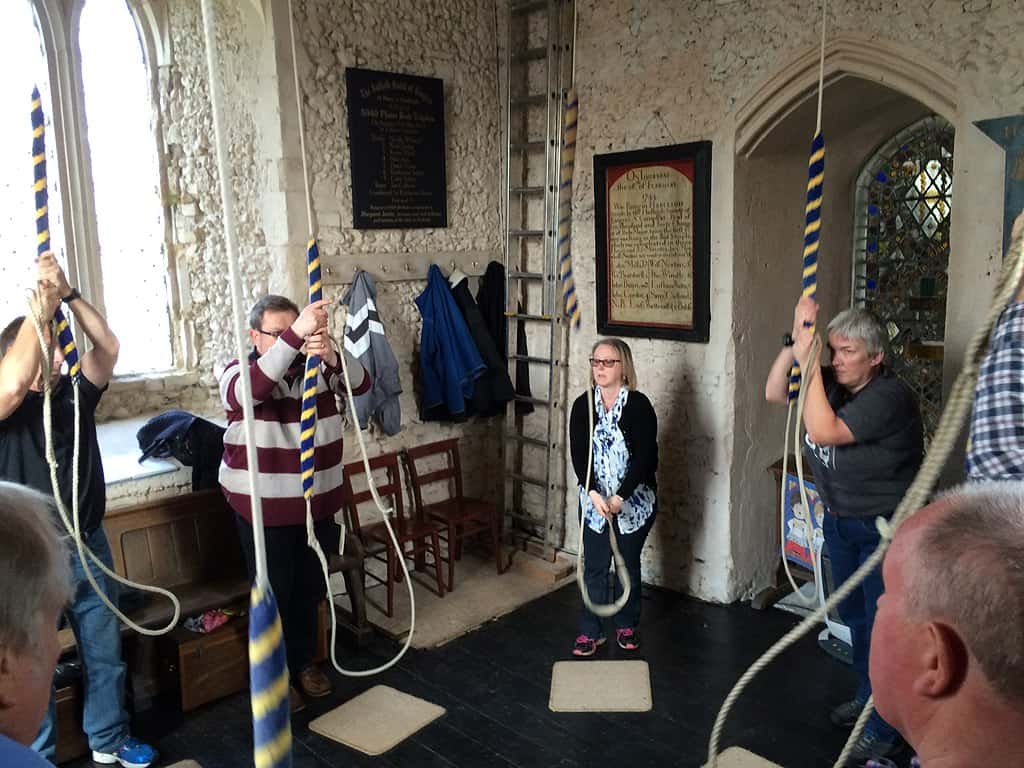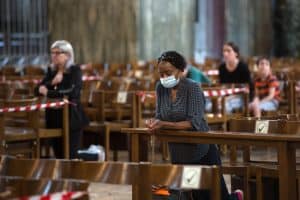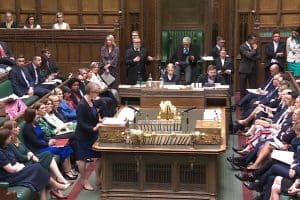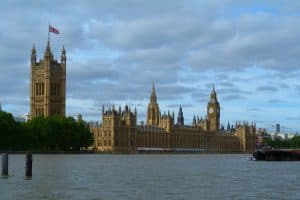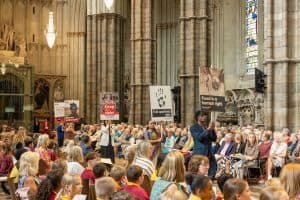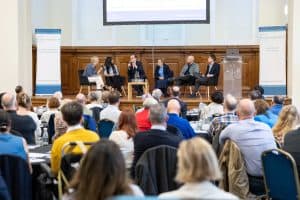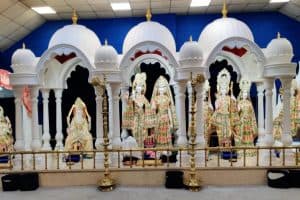By Angela Youngman
This Sunday, 14 May, is the first Bell Sunday in the UK — and its organisers hope it will become a permanent feature in future years, strengthening awareness of the role that bells and ringers play within the church and community.
There are two reasons for the date. This is the nearest Sunday closest to the feast day of St Dunstan (909-988), Abbot of Glastonbury and Archbishop of Canterbury, who is patron saint of bellringers, having experimented with designing and forging bells.
The other reason lies in the style of bellringing that is common throughout the UK. Change ringing creates a peal that has become an essential feature of national and local events — a far cry from the single toll that calls people to church.
On 2 May 1715, the bells rang out from the tower of St Peter Mancroft Church, Norwich. This became known as the “first true peal”.
Simon Rudd, of St Peter’s bellringers, says: “It was the result of much meticulous preparation. Norwich was the undisputed centre of expertise for change-ringing at this time and while other ringers across the country might have been striving to be the first, we had the bells, the ringers and the expertise to get there first.”
Since then, change-ringing has developed into an art form, involving complex patterns of bell tones, creating a constantly changing waterfall of sound. Ringers work closely together to create the music of the bells.
On Bell Sunday, bell towers are being encouraged to encourage visitors to have a go on the bells, demonstrate bell ringing and bell related equipment. The Central Council of Church Bell Ringers (CCCBR) has issued suggestions of bell-related psalms, readings, hymns and music that could be incorporated into services.
Typical examples include the hymns Let the Bells Peal Forth, Ring! Ringers, Ring!, and Ring the Bells of Heaven, Sir John Betjeman’s blank verse autobiography Summoned by Bells, and Louis Vierne’s organ piece Carillon de Westminster, a fantasia on the Westminster Chimes.
Dr Alan Smith, the Bishop of St Albans, said: “I hope as many towers as possible will join in. There are plans to open towers to the public, so visitors can watch the bells being rung — and perhaps even sign up to learn the ancient art of bellringing.”
The Covid pandemic led to a decline in the number of ringers nationwide, resulting in towers seeking new recruits. Most recently, however, the call for all 38,000 church bells nationwide to ring peals on Coronation Day led to many new ringers coming forward.
It can take at least 15 hours of training before a new ringer can join a bell tower. Usually, this training is undertaken during ringing practice, but at St Peter Mancroft a ringing discovery centre has been installed. It contains eight training bells along with a ringing simulator, making it suitable even for children to learn.
Over the years, the development of change-ringing has resulted in many experiences. Ringers often travel to other churches to experience different bells and learn new peals. One of the most sought-after and challenging bellringing experiences involves the bells of Pershore Abbey in Worcestershire.
Even experienced ringers visiting Pershore have been known to take one look upwards and say it is not for them. Ringers there have to stand on a cage-like platform suspended 72ft above the ground. Stuart Piper, the tower captain at Pershore Abbey, said: “It’s not easy ringing bells weighing approximately 25 hundredweight from the platform when you cannot see the other ringers easily. We have to stand four on either side, rather than in a circle!”
Equally unusual was a ringing project at Durham Cathedral during the 2017 biannual Lumiere, when the Spanish light artist Pablo Valbuena collaborated with the bell major, Chris Crabtree, to combine ringing with matching light projections.
The effect was created using a “half-muffled” technique — when a bell rang one way, one set of lights shone; and when the clapper struck the bell, other lights shone.
Huge television screens allowed visitors to watch the 64 ringers who were needed to ring the cathedral’s 10 bells continuously for six hours every night during the Lumiere. To do this, the cathedral’s 10 ringers were joined by teams from elsewhere in the country enabling teams to take a break every two or three hours.
The number of church bells in use nationally continues to grow. Most recently, All Saints’ Church in North Moreton, Oxfordshire, installed new bells, bringing its total to eight. The two new bells are the first in the country to bear the monogram of King Charles III and Queen Camilla. Such a cipher can be added only during a coronation year.
The sound of bells has been a feature of the area since medieval times. The North Moreton tower captain Rob Nickless said: “This tower has been here for very many years, right in the centre of the community, and is here to call people to worship and to celebrate many events in people’s lives — we want to do so with enhanced bells.”
The CCCBR said: “It is hoped that Bell Sunday will raise awareness and emphasise the importance of the sound of bells in our communities, and how bells can help to bring church and community together.”
Read our factsheet on church bells here
The Central Council of Church Bell Ringers here >>
St Peter Mancroft, Norwich “Ringing at Mancroft”

